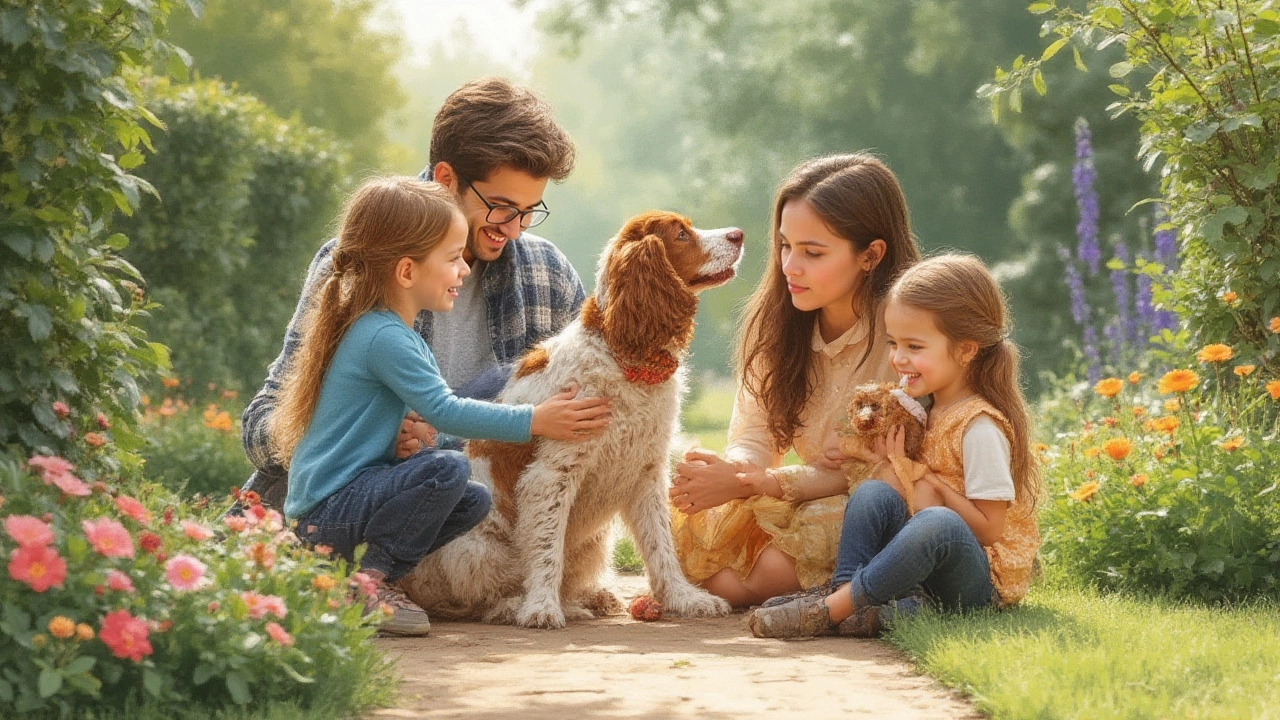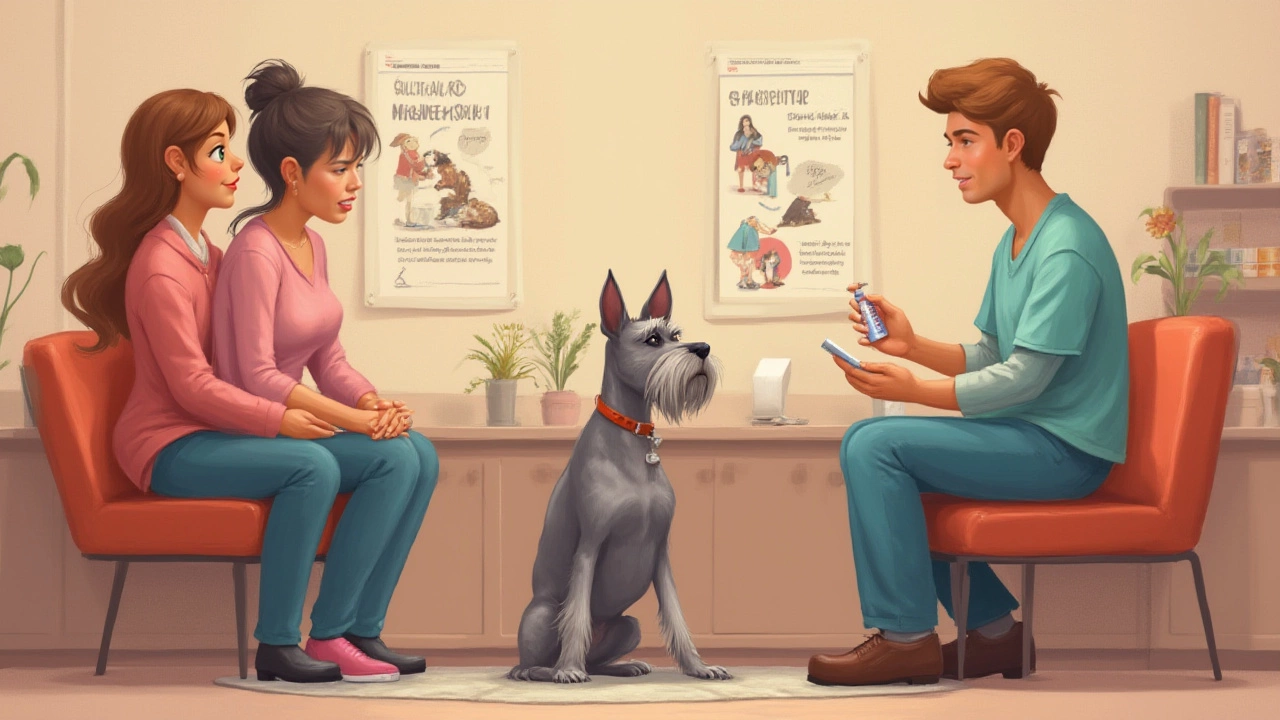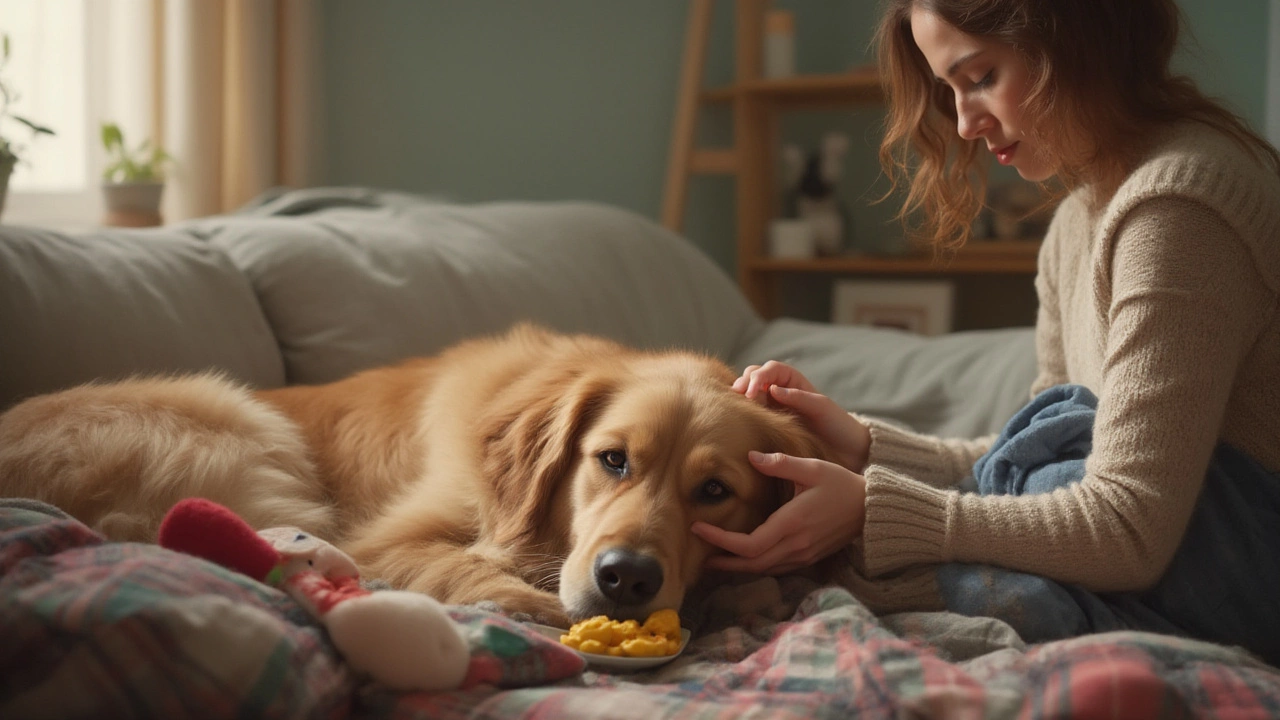You ever notice how a fresh haircut can leave your dog acting a little off? It’s not just vanity—dogs really do get stressed from grooming. Imagine someone shaving off the majority of your hair, plopping weird-smelling shampoo onto your skin, clipping your nails and then tossing you a treat, expecting you to strut around like nothing happened. That’s a lot for a pup. The truth is, even the most chill, happy-go-lucky dogs can get pretty overwhelmed after a grooming session. Some pace the house, some get snappy, others crawl under the couch and won’t come out until dinner. The trick is knowing why this happens, spotting the signs, and coming prepared with the right toolbox to soothe your pup back to their happy, zoomy self.
Why Do Dogs Get Stressed After Haircuts?
People love how their dogs look after grooming, but for your dog, the experience is full of strange sounds, slippery floors, odd scents, and physical contact that’s way more intense than a belly rub. The whole situation can trigger sensory overload. Some breeds, like Shih Tzus, Poodles, and Schnauzers, are more sensitive to changes in their fur length or to clippers. And there’s the fact that dogs communicate using their fur—a freshly trimmed coat can make them feel exposed or vulnerable.
Studies show that about 39% of pet owners say their dog gets anxious after a grooming. Think about it: bright lights, buzzing machines, and sometimes fellow yelping dogs—it’s like going to the dentist if you hate the dentist. The stress triggers a flood of adrenaline and cortisol. For some dogs, the feeling sticks around long after the clippers are off. You might notice tremors, whining, hiding, or even a little defensiveness you didn’t see before.
It’s worth pointing out that dogs use their coats for temperature regulation. A really close cut, especially with double-coated breeds, can make them cold, itchy, or even sun-sensitive. There’s also sometimes the problem of razor burn or clipper irritation, which is uncomfortable. Some dogs, especially rescues who have had bad past experiences, might even link grooming to old fears or trauma.
So, if your dog seems out of sorts, restless, or just a bit sad after their haircut, you’re not alone. Recognizing that it’s not just ‘bad behavior’ but real discomfort is the first step.
Signs Your Dog Needs Comfort After Grooming
Every dog reacts differently. Some shake it off and chase a ball five minutes later. Others act as if the sky is falling. What should you look for?
- Main keyword: dog haircut—If your dog keeps licking or scratching at their skin, especially in the area that's freshly clipped, it could be a sign of irritation or anxiety.
- Watch for tremors, tucking their tail tightly under, or cowering in corners. These are classic signs of stress.
- If your usually social buddy turns aloof or even a little snappy, don’t take it personally. This is classic post-grooming grumpiness.
- Sometimes, dogs might avoid walking or seem clumsy if their paw fur was trimmed too short. It’s not drama—they really do feel odd.
- Occasionally, a new haircut can throw off their scent—a dog’s way of recognizing themselves and their space. Sniffing all over the house is their way of getting reacquainted.
In rare cases, you’ll spot spots of redness, raised bumps, or even tiny nicks from clippers—always check them over after a trim, especially for home grooming.

Immediate Ways to Soothe Your Dog Right After a Haircut
The moment you see those big “help me” eyes after grooming, your instinct is to fix things. Here’s how to make things way less scary for your pup:
- Get straight home if you’ve been to the groomer. Familiar smells make a big difference. Home is safe.
- Offer water. Stress makes dogs pant, and hydration matters more than you think.
- Check their skin—especially sensitive areas like armpits, belly, and ears. If there’s redness or razor burn, a dab of vet-approved aloe can cool things down (never use human creams unless your vet says okay).
- Don’t ignore them, but also don’t smother with attention. Some dogs want to cuddle, others prefer a quiet blanket fort.
- If they’re cold—even in summer—a light doggy shirt or soft towel can help. Dogs can get chilly fast after a close shave.
- Offer a high-value treat or a food-stuffed toy. Chewing releases endorphins and brings their stress hormones down.
- Keep things calm. No loud noises, doorbells, or rough play the first couple hours home.
- Let them choose the spot. Some want to curl up in a crate, others sprawl on their favorite bed. Respect that.
Many groomers recommend a quick walk—just gentle sniffing and slow exploring. This resets their sense of normal, especially after strong shampoo smells. Make sure your dog feels safe, not rushed.
Tried-and-True Tricks for Comforting Anxious Dogs
So now you’ve got a stressed pup with a fancy new ‘do—what next? There’s no one-size-fits-all fix, but here are tried-and-tested tricks that most dogs love:
- Massage therapy: Yes, dogs love massages just as much as people. Gentle rubbing behind the ears, along shoulders, or even down the legs can do wonders. Keep your touch slow and calm. There’s a reason some veterinary clinics now offer dog massage—it’s proven to lower stress levels.
- Soothing scents: Lavender is safe for dogs (in tiny, diluted amounts) and can calm nerves. Don’t apply oil directly to skin; instead, diffuse a bit in the room or use a doggy-approved spray on bedding.
- Weighted blankets: Some dogs respond well to gentle pressure, like a weighted vest or soft, slightly weighted blanket. This mimics the comfort of being cuddled and helps with anxiety.
- Music therapy: Classical or specially designed pet-calming playlists on Spotify or YouTube work wonders. A 2023 study showed that classical music reduced stress in shelter dogs by up to 70% compared to silence.
- Temperature control: Watch for shivers if your dog’s fur is really short. A little sweater helps, but don’t overdo it in warm weather.
- Don’t force socialization: If your dog wants space, let them have it. Some dogs need a few hours, some need a full day to bounce back after grooming.
- Keep them active: Gentle walks, sniffing games, or even a slow tug session help your dog burn off nervous energy.
- Distract with play: Introduce a new squeaky toy or puzzle to redirect nervousness into curiosity.
- Offer comfort with your presence: Sometimes just lying quietly on the floor with your dog is enough. Dogs pick up on calm energy fast.
If your dog’s anxiety after grooming seems extreme, or if you see signs of actual pain or injury, don’t wait it out. Call your vet or groomer for advice.

Building a Positive Relationship with Grooming
If after every haircut your dog acts like you’ve betrayed their trust, it’s time to rethink your grooming routine. Most dogs can learn to tolerate—and even enjoy—grooming if you pair it with positive experiences and slow, patient steps.
Try short at-home sessions using treats and praise—no clippers at first. Gently touch their paws, ears, and coat, rewarding every calm moment. Gradually introduce grooming tools so there’s no surprise vibe at the groomer’s. Desensitize your dog to blow dryers by letting them sniff the unplugged dryer, then turning it on low across the room before ever aiming it at fur.
Consider grooming at home if salons make your dog extra anxious. Mobile groomers are another great alternative—they bring the salon to you, minus the barking chaos. Always pick groomers who work slow, use positive reinforcement, and let you stay if needed. Good groomers will note your dog’s quirks and adjust techniques accordingly.
Don’t forget the basics: groom more often but with less intense sessions. Keeping your dog’s coat tangle-free in between “big” trims helps avoid the drama of intense mat-removal or shaves. And choose shampoos and conditioners made for dogs—pH balanced, no harsh perfumes. Your dog’s skin is thinner and more sensitive than you think.
Building positive grooming habits is key yet too often overlooked. Regular brushing sessions at home, even if your dog hates being brushed, can slowly turn into bonding opportunities. Keep it light, pair it with affection, and quit before your dog squirms away.
Here’s a little data on dog grooming stress and benefits of desensitization:
| Technique | Stress Reduced (%) | Notes |
|---|---|---|
| Short, daily desensitization | 60 | Best for puppies or rescue dogs |
| Treat-based reinforcement | 75 | Pair treats with touch/tools |
| Music therapy | 70 | Classical or dog-optimized tunes |
| In-home grooming | 65 | Eliminates strange environment |
Remember, patience is your best tool. Turning grooming into a positive, even fun routine changes everything. Next time your dog sets eyes on the clippers, it might just wag a little faster—or at least not hide under the couch.

